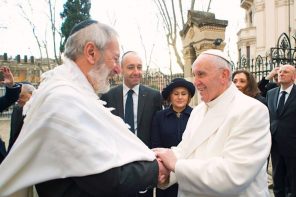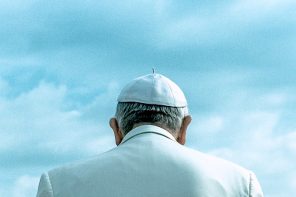One of the more popular genres of stories in the Islamicate world is the dastan, or tale. The tales of Amir Hamza are a favorite set of stories. Purportedly about the exploits of an uncle of the Prophet Muhammad, they are a collection of fantastic stories chronicling his deeds and exploits. In Urdu, the tradition appears to be tied to the poetic tradition of the masnavi, which involves the creation of fantasy worlds where the heroes battle their foes. Although we now conceive of the dastan as a printed tale, like much Islamicate literature, it has a strong oral component.
The dastangoi, or story-telling tradition, is a dying art form according to Mahmood Farooqi, who organizes dastango , story-tellers, to revive the art. He recently staged a production for the Muslim Voices Festival in NY, featuring Danish Husain and renowned actor Naseeruddin Shah. Shah seems to have been brought for his star appeal for the festival, but he was very good, as were both Farooqi and Husain.
Rachel Cooper of the Asia Society began the evening with a short, informal introduction to the tradition, followed by Farooqi’s more formal introduction. He cracked a joke that while the East was developing stories, the West was developing technology, and he wouldn’t have it any other way, showing the deep cultural impact of stories. Both Farooqi and Husain talked about the etiquette of the performance. In a traditional setting, there would be more performer-audience interaction, but in this setting, they had to get through the stories. In addition, rather than clapping at good lines, they encouraged the audience to cry out “vah vah,” the equivalent of a “bravo,” and normative for oral performance settings. Farooqi also comments that the dastan offers us a way to see how being Muslim has changed over time; he pointed out that in an earlier time Muslims had no qualms about mixing the sacred and profane, with the Prophet’s “uncle” appearing in a fantasy tale.
When the performance began, there were only two actors on-stage, Farooqi and Husain, seated. They played all the roles of the tale, which did not include Amir Hamza, but his companion Amar Ayyar, a trickster character. One of the striking things of the performance was it’s fluidity. The dastango rarely looked at one another, they were telling the audience the story, and as their passions increased, we were brought into the tale, breaking the fourth wall. We were part of the magical world they conjured, not as active participants, but as actors still.
One of the key questions I had was “why should we care about a dying art form? why should we revive it? what is the value?” Being drawn into the performance helped to answer these questions. The written text is fixed. The meaning is given, and rarely is it discussed. One walks away with a fixed understanding that usually reinforces the reader’s view of the world. In a performance, the text is liquid, it changes on context. It is inherently communal, creating a sense of belonging and contested meaning. The set-up is simple, with two dastango sitting and spinning the tale, with no music, props, or real acting outside of the face and some simple hand gestures. While we think of religious texts in this way — does Qur’an mean “reading” or “recitation” for example — but popular texts are different matter. However, any culture is made up of more than religion, and the popular must also be contested space.
The second act sees actor Shah replacing Farooqi on the cushions, and Farooqi retreating to a dark corner of the stage. With Shah’s appearance, there is far more interaction between the two dastango, reintroducing the glass wall. However, the performance was still engaging, and while the first act possessed some archaic language as befits an old story, the second act introduced some modern terms and English loans, highlighting the living nature of the material.
The inclusion of Indic material with Islamicate material hinted at a rich cultural collaboration that I wish was further explored in notes or on the website. Terms like “sati,” or bride immolation, were used for Muslims, a practice that is more closely associated with Hinduism. There also seems to be an undercurrent of Islamic supersessionism involved, where the heroes’ mythic adversaries are problematic parts of Indic cultures. These are relatively minor complaints. Perhaps the biggest problem of the evening was the poor super-titles for the performance. They was almost non-existent. While a direct translation may have been difficult for a text that seems to change slightly each performance, better real-time summaries were needed.
Farooqi’s vision for reviving the dastangoi tradition is an admirable one, and his expert staging and acting show the value of the art form in a way simply reading about it does not. The performative aspect of the night was powerful, even if one could not follow the language, as many in the audience could not. With continued shows like the one in New York, and Farooqi’s success in South Asia, he is well on his way to reviving this tradition.




